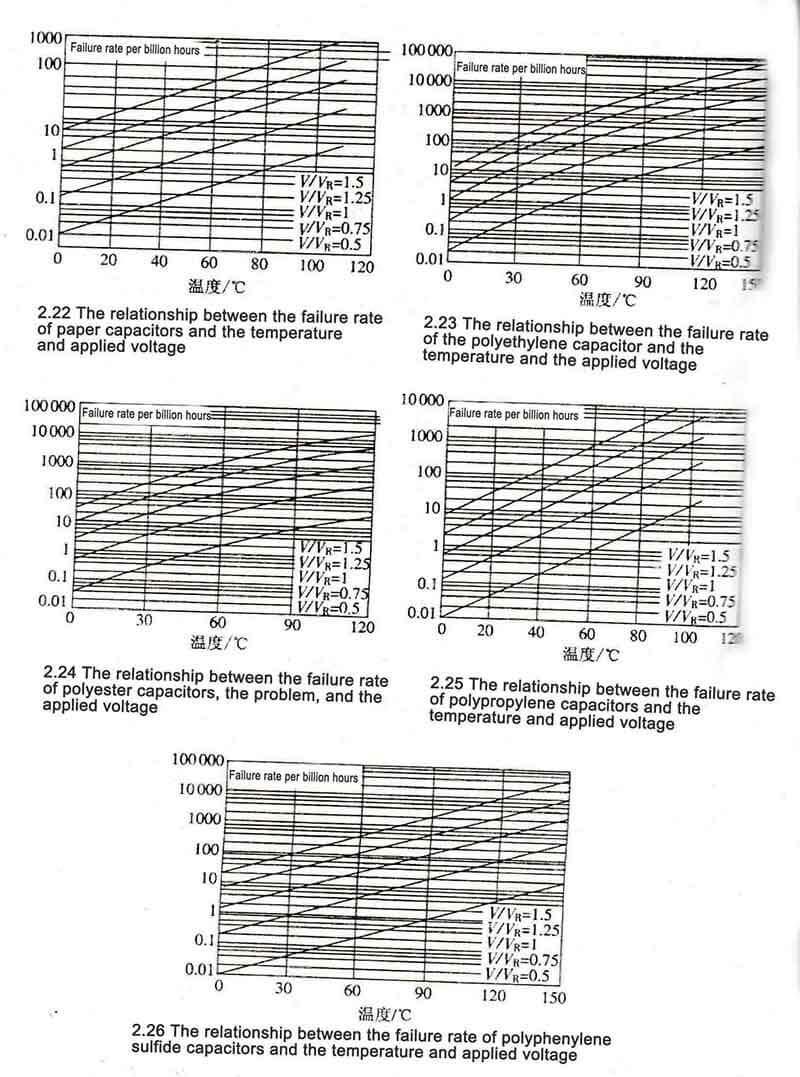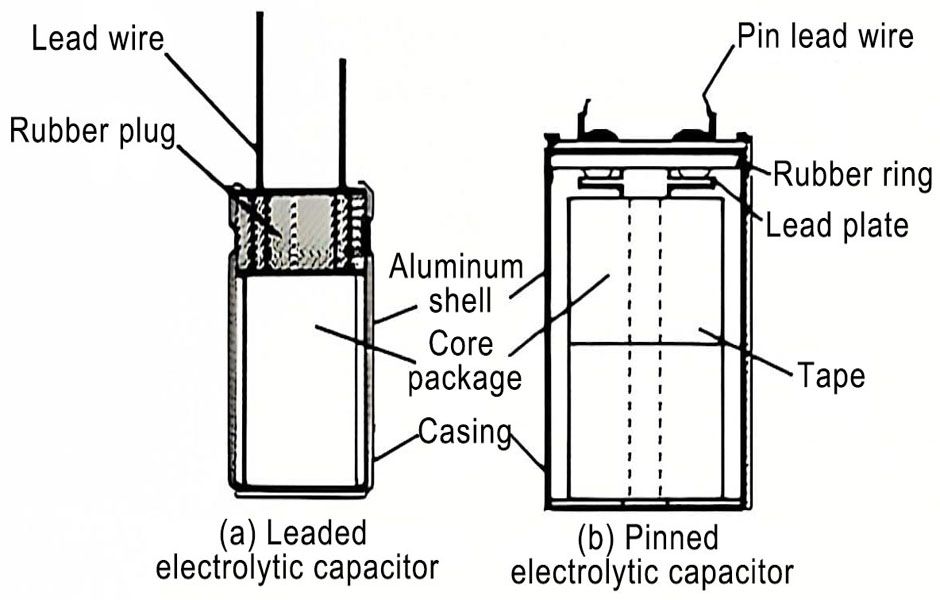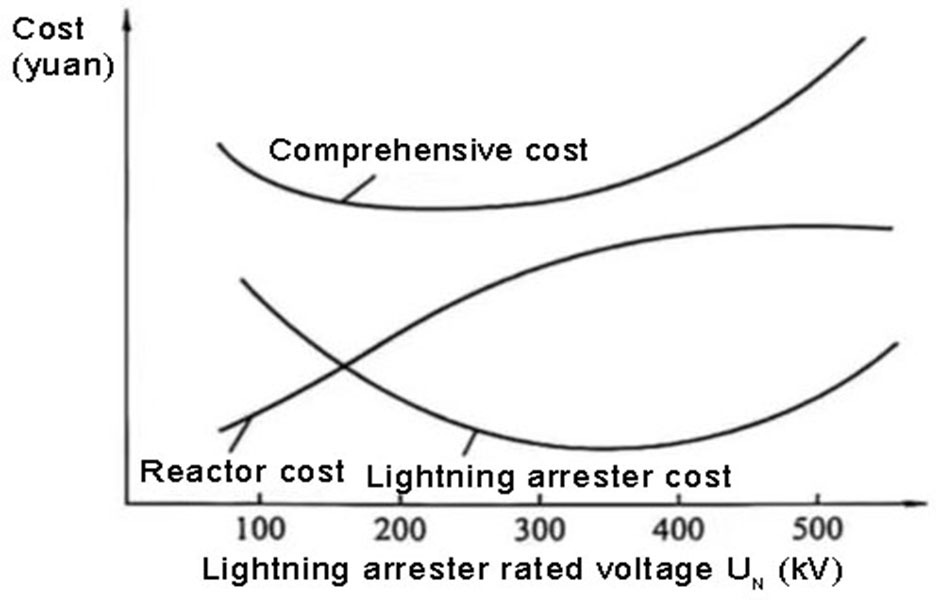🎈The failure rate is an important parameter of the quality and reliability of electronic components. In addition to the manufacturing level, the failure rate has a lot to do with the application conditions.
💡The main factors that affect the capacitor failure rate during application are operating temperature and operating voltage. The relationship between the failure rate of different media and the operating voltage is shown in Figure 2.22~Figure 2.26. They are paper capacitors, polyethylene capacitors, polyester capacitors, The relationship curve of the failure rate of polypropylene capacitors and polyphenylene sulfide capacitors with operating temperature and operating voltage.
💡The ordinate in the figure shows the failure rate per billion hours, and the abscissa is the operating temperature. The five curves/slashes in the figure are the relationship between the capacitor failure rate and the operating temperature at 1.5 times the rated voltage, and 1.25 times the rated voltage. The relationship between the failure rate of the capacitor and the operating temperature, the relationship between the failure rate of the capacitor and the operating temperature at 0.75 times the rated voltage, and the relationship between the failure rate of the capacitor and the operating temperature at 0.5 times the rated voltage.

⭕️First, the failure rate increases with the increase of operating temperature. The failure rates of Evox-Rifa’s paper capacitors, polyester capacitors, polyester capacitors, and polyphenylene sulfide capacitors under rated voltage working conditions increase with temperature. 1.5 100, 1000, 15000, 3000 when it rises to 105℃.
⭕️The increase of the operating voltage at the same operating temperature will also lead to the increase of the failure rate. At room temperature (30°C), when the working voltage is 0.5VR, 0.75VR, 1VR, 1.25VR, 1.5VR, the corresponding failure rates per billion hours are 0.08, 0.6, 3, 8, 30 for paper capacitors, respectively. Ethyl capacitors 0.25, 2.5, 12, 40, 130, polyester capacitors 0.4, 4, 20, 80, 220, polypropylene capacitors 0.1, 1, 6, 20, 60, polyphenylene sulfide capacitors 0.05, 1, 7, 30, 100. Therefore, in normal applications, the overvoltage use of capacitors should be avoided as much as possible.
🎈It can be seen from Figures 2.22~2.26 that the paper dielectric capacitor has the lowest failure rate among the above five dielectrics, which is one-tenth of that of polypropylene dielectric capacitors and one of the highest among polyphenylene sulfide capacitors, polyethylene capacitors, and polyester capacitors.




